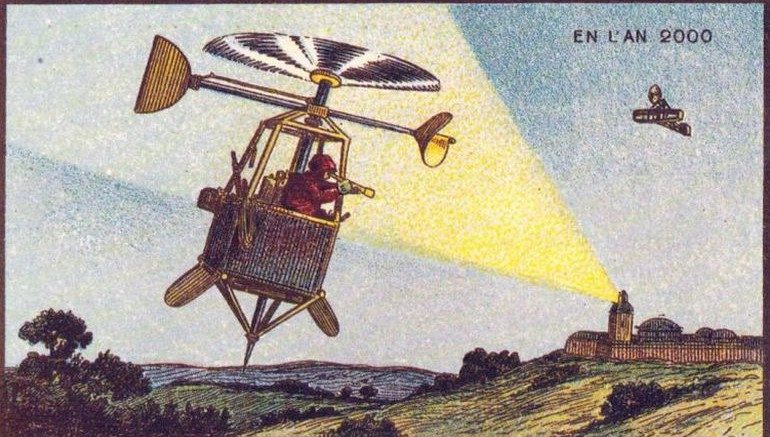By Lt. Cdr. Sean Walsh, USN (Ret.)
2034: A Novel of the Next World War by Admiral James Stavridis and Elliot Ackerman is the latest in a genre that stretches back more than a century and perhaps as far back as Homer’s Iliad as has been suggested by Mills and Heck in a 2020 essay on the Modern War Institute website.
A number of speculative novels, mostly centered around the invasion of Britain and intended to alert the public about this danger, were published in the late 19th century. Many of these are now in the public domain and available on the internet. They include the following:
· The Battle of Dorking. Reminiscences of a Volunteer (1871) by George Tomkyns Chesney
· The Great War in England in 1897 (1894) by William Le Queux
· The Captain of the “Mary Rose”: A Tale of Tomorrow (1894) by W. Laird Clowes
· The Angel of the Revolution: A Tale of the Coming Terror (1895) by George Griffith
Moving into the 20th century, The Riddle of the Sands: A Record of Secret Service by Erskine Childers, published in 1903, although classified as an espionage novel, is centered around German preparations for an invasion of England and was intended as a wakeup call to the British public. Also, Sir Arthur Conan Doyle published the short story “Danger! Being the Log of Captain John Sirius” in 1914 about the danger posed to Britain by the new technology of submarines.
Published in 1910 and usually classified as science fiction, the short story “The Unparalleled Invasion” by John Griffith Chaney—better known by the nom de plume Jack London—predicted a future where China rises as a world power and the Western nations resort to using biological warfare against it.
Continuing on the Pacific theme, a 1925 novel by Hector Charles Bywater, The Great Pacific War: A History of the American-Japanese Campaign of 1931-33, predicted a future war between Japan and the United States in the 1930’s and correctly predicted several aspects of World War II in the Pacific. Bywater was a well-known naval analyst and the novel was actually a sequel to the non-fiction work Sea-Power in the Pacific: A Study of the American-Japanese Naval Problem (1921) which also predicted a future naval war between the two powers.
The potential of aircraft to transform warfare was also advocated by several theorists of the inter-war period, including Billy Mitchell in the United States and the Italian Giulio Douhet. Both of these published non-fiction works but Douhet also wrote a fictional work on this theme, La Guerra del 19- (The War of 19-), which was published in 1930 after his death and is available along with his other works from the Air University Press.
Post World War II, the Cold War threat of nuclear war loomed over the world and several novels were written based on this theme. On the Beach (1957) by Nevil Shute was one, followed by Fail-Safe (1962) by Eugene Burdick and Harvey Wheeler, which by coincidence was released during the Cuban Missile Crisis. At the tactical level, The Bedford Incident (1963) by Mark Rascovich focused on the pursuit of a Soviet submarine by a US destroyer that ends in a nuclear exchange. All three of these novels were adapted as major motion pictures.
As the Cold War moved on, the threat of nuclear war lessened and the potential of a conventional Soviet invasion of Western Europe became more likely. In 1979, General Sir John Hackett along with a group of senior colleagues wrote The Third World War: August 1985 which offered a detailed account of how such a war might occur based on knowledge of the weapon systems and strategies from both sides.
The best-known book in this time frame is probably Red Storm Rising (1986), co-written by Tom Clancy and Larry Bond. Although not the first techno-thriller, it is a prominent example of the genre. It is also interesting in that Bond’s wargame Harpoon was used to develop some of the battle sequences.
Another interesting book from this time period is Red Army: A Novel of Tomorrow’s War (1989) by Ralph Peters which focuses on the Soviet point of view based on his experience as a career US Army intelligence and foreign area officer with focus on the Soviet Union.
More recently, Ghost Fleet (2015) by P.W. Singer and August Cole looks at the Pacific theater with China as the threat but with a heavy emphasis on technology and the cyber war aspect.
Sources
· “The Fear of Invasion” (2014) by Mike Ashley (www.bl.uk/romantics-and-victorians/articles/the-fear-of-invasion)
· “The Impact of Fiction on the Future of War” (2019) by Franz-Stefan Gady (thediplomat.com/2019/12/the-impact-of-fiction-on-the-future-of-war/)
· “War Books — Preparing for Great-Power Competition: A Fiction Reading List” (2020) by Walker Mills and Timothy Heck (mwi.usma.edu/war-books-preparing-great-power-competition-fiction-reading-list/)


